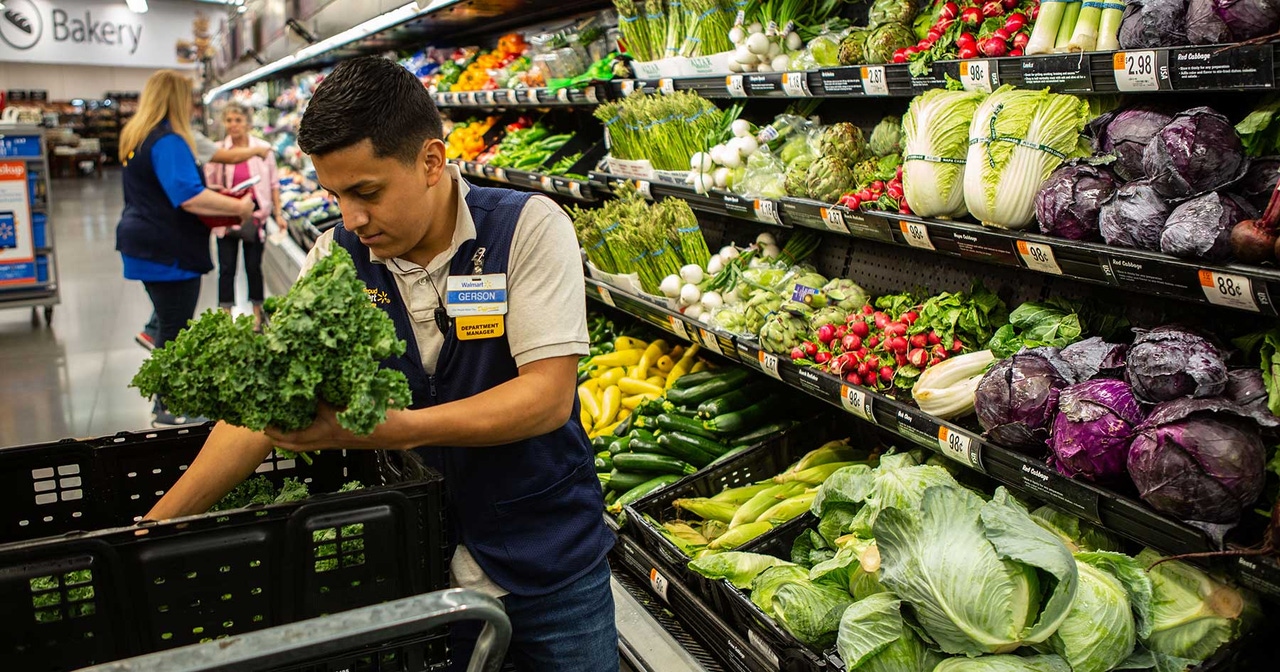Walmart's Momentum Continues in Q3Walmart's Momentum Continues in Q3
Pricing, omnichannel drive 3.4% comps. Sharp pricing, omnichannel convenience and a strong U.S. economy combine to lift comps by 3.4%.

Sharp pricing and omnichannel convenience helped Walmart gain further U.S. sales momentum and market share in its fiscal third quarter.
Non-fuel U.S. comparable-store sales gains of 3.4% in the quarter exceeded Wall Street estimates—and any number of rivals that have reported over a similar period, many of which cited deflating prices in fresh food as a factor in weaker comps. Walmart may have continued to play a role in that equation, as officials cited price investments and an increasing mix of online sales as a percentage of its total revenues as factors in reduced U.S. margins in the quarter.
Fresh food sales drove low single-digit comps in grocery and helped spark a 1.2% increase in traffic to U.S. stores, while the average ticket increased 2.2%, reflecting what CEO Doug McMillon called a “favorable economic environment.” The retailer's U.S. e-commerce sales also grew 43%, and contributed about 140 basis points to the segment comp.
The grocery comps represented a slight sequential decline from the second quarter, primarily due to lapping sales gains realized due to hurricanes in last year’s third quarter. But on a two-year basis, grocery comps were Walmart’s strongest in nearly nine years, McMillon said.
“Our results reflect not only value our customers are finding in our offer, and a lot of hard work from the team, but certainly some macro tailwinds as well, especially in the U.S.,” McMillon said in prepared remarks.
He said advances in omnichannel capabilities have contributed to the retailer’s increasing momentum, citing grocery pickup, which has expanded to 2,100 U.S. stores, and growing delivery capabilities such as the test of driverless delivery in Miami, its Spark platform and partnerships with third-party providers.
“As we’ve learned to do pickup well, it has unlocked our ability to provide delivery,” McMillon said. “We’re moving quickly on this front as well, and by the end of the year, we’ll cover about 40% of the population with delivery through about 800 stores.”
For the period ending Oct. 31, Walmart posted total U.S. sales of $80.6 billion, a 3.7% increase. Operating income was 3.7% to $3.9 billion. Its Sam’s Clubs stores posted 3.2% comps and sales of $14.5 billion. The latter figure dipped by 2.7% reflecting store closures.
Currency headwinds adversely affected international sales by 2.6%, with $28.8 billion reported lower than expected. Excluding currency effects, international sales increased by 1.6%, and comp sales were positive in nine of its 10 international markets.
The year-to-date performance prompted Walmart to raise its full-year financial guidance and is now expecting no less than 3% U.S. comps, where it previously said it was expecting “about 3%.” Its range for adjusted earnings per share also increased to a range of $4.75 to $4.85 vs. a previous call of $4.65 to $4.80.
About the Author
You May Also Like






